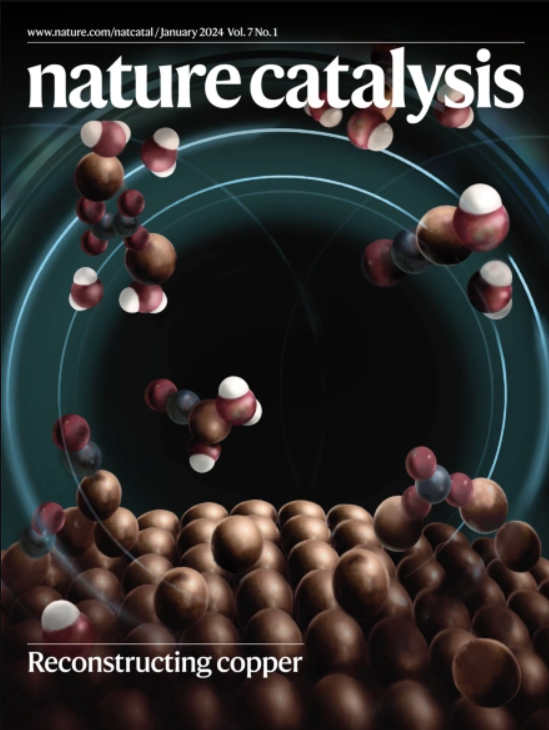Precision installation of silyl synthetic handles within arenes by regiocontrolled ruthenium C(sp2)–H functionalization
IF 44.6
1区 化学
Q1 CHEMISTRY, PHYSICAL
引用次数: 0
Abstract
The site-selective functionalization of C(sp2)–H bonds represents a powerful strategy for the synthesis of structurally diverse compounds with broad applicability. Here we report efficient regioselective catalytic methods for the formation of benzyltrimethylsilanes through ruthenium-catalysed C(sp2)–H silylmethylation. The developed protocols enable selective functionalization at both ortho and meta positions within arenes bearing N-based directing groups. The resulting silylmethyl compounds can undergo diverse transformations, including nucleophilic aromatic substitution, carbonyl addition, olefination and desilylation. Significantly, the regiodivergent installation of silylmethyl synthetic handles allows for the synthesis of the pharmaceutical losmapimod and could further be applied in direct late-stage functionalizations. Mechanistically, an essential role for biscyclometallated ruthenium(II) species has been found, with the formation of intermediate ruthenium(III) species indicated by paramagnetic NMR experiments. These synthetic inventions and mechanistic elucidations signify a transformative step within ruthenium-catalysed C(sp2)–H functionalization, enabling diverse syntheses and providing a framework for future development. The site-selective functionalization of C(sp2)–H bonds is a powerful strategy for the synthesis of structurally diverse compounds with broad applicability. Here the authors show ruthenium-catalysed regiodivergent methods for the installation of silyl synthetic handles at both ortho and meta sites within arenes.


区域控制钌C(sp2) -H功能化在芳烃内精确安装硅基合成手柄
C(sp2) -H键的位点选择性功能化是合成具有广泛适用性的结构多样化化合物的有力策略。在这里,我们报道了通过钌催化的C(sp2) -H硅基甲基化形成苯三甲基硅烷的有效区域选择性催化方法。所开发的协议可以在基于n的定向组中实现正位和元位的选择性功能化。所得到的硅基甲基化合物可以经历多种转化,包括亲核芳香取代、羰基加成、烯烃化和脱硅基化。值得注意的是,硅基甲基合成手柄的区域发散安装允许药物losmapimod的合成,并可以进一步应用于直接的后期功能化。在机制上,双环金属化钌(II)的作用已经被发现,通过顺磁核磁共振实验表明中间钌(III)的形成。这些合成发明和机理的阐明标志着钌催化C(sp2) -H功能化迈出了革命性的一步,使多种合成成为可能,并为未来的发展提供了框架。
本文章由计算机程序翻译,如有差异,请以英文原文为准。
求助全文
约1分钟内获得全文
求助全文
来源期刊

Nature Catalysis
Chemical Engineering-Bioengineering
CiteScore
52.10
自引率
1.10%
发文量
140
期刊介绍:
Nature Catalysis serves as a platform for researchers across chemistry and related fields, focusing on homogeneous catalysis, heterogeneous catalysis, and biocatalysts, encompassing both fundamental and applied studies. With a particular emphasis on advancing sustainable industries and processes, the journal provides comprehensive coverage of catalysis research, appealing to scientists, engineers, and researchers in academia and industry.
Maintaining the high standards of the Nature brand, Nature Catalysis boasts a dedicated team of professional editors, rigorous peer-review processes, and swift publication times, ensuring editorial independence and quality. The journal publishes work spanning heterogeneous catalysis, homogeneous catalysis, and biocatalysis, covering areas such as catalytic synthesis, mechanisms, characterization, computational studies, nanoparticle catalysis, electrocatalysis, photocatalysis, environmental catalysis, asymmetric catalysis, and various forms of organocatalysis.
 求助内容:
求助内容: 应助结果提醒方式:
应助结果提醒方式:


